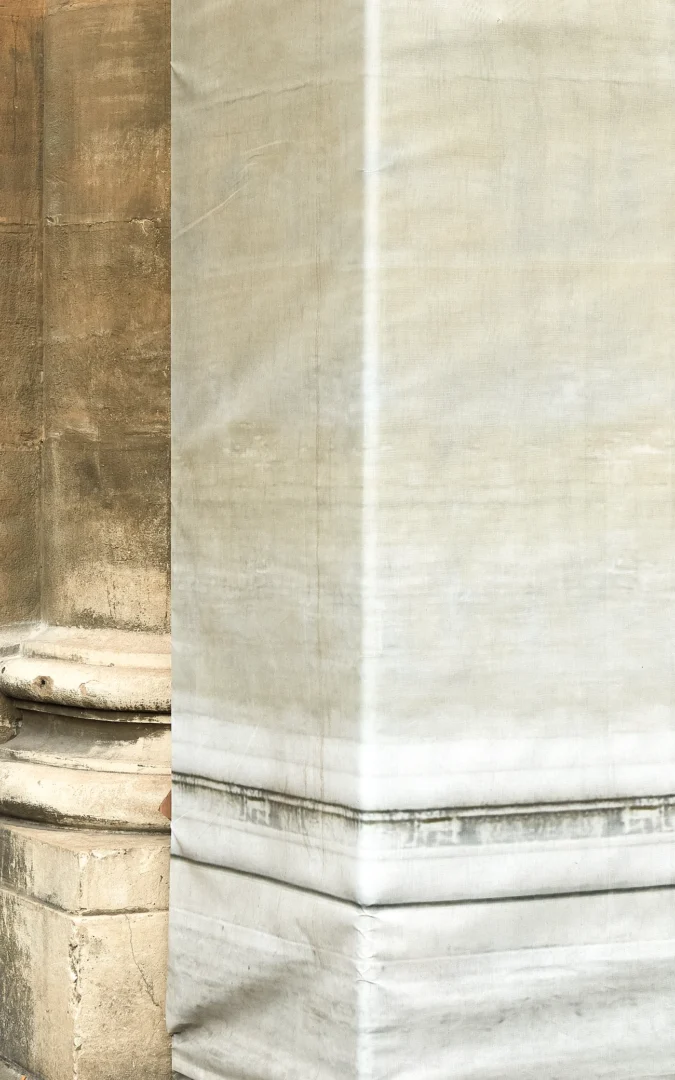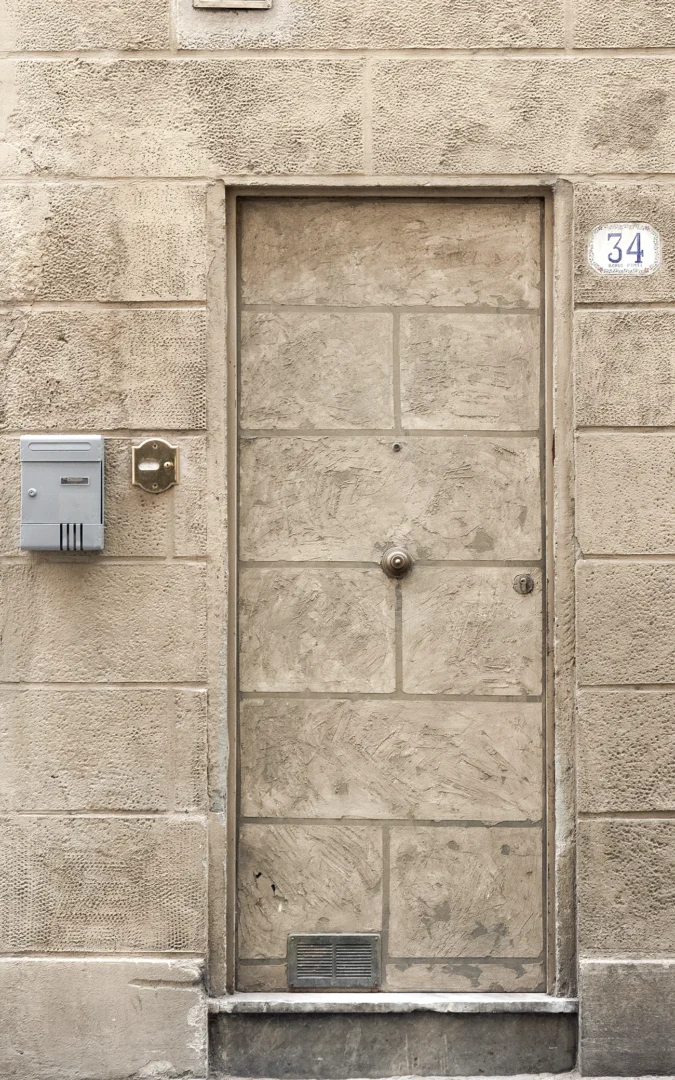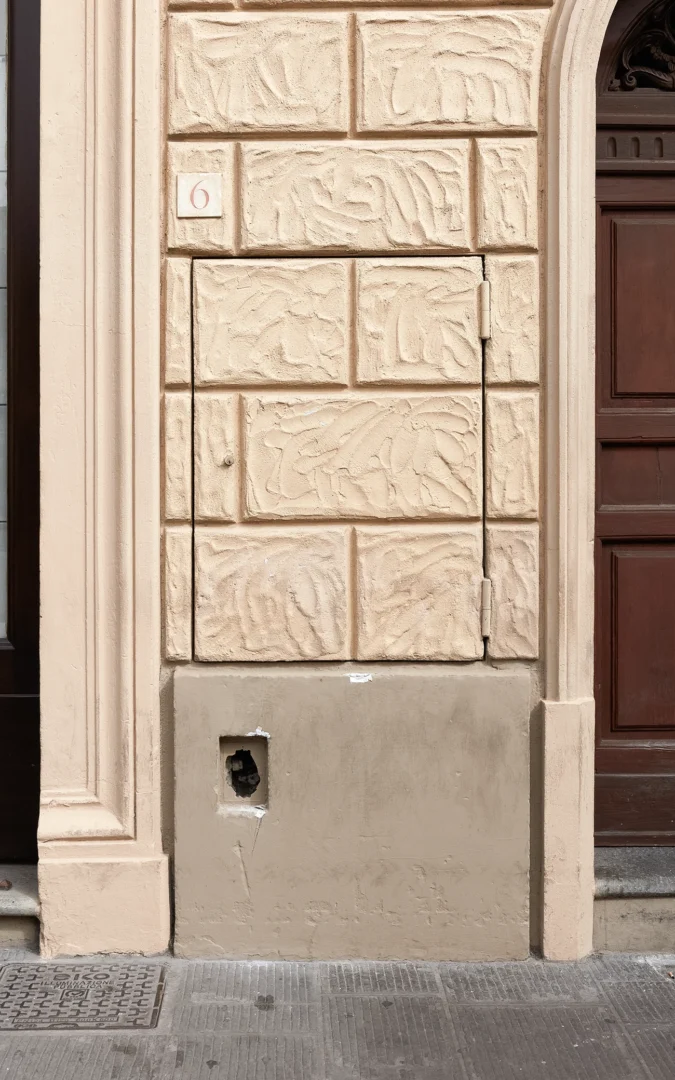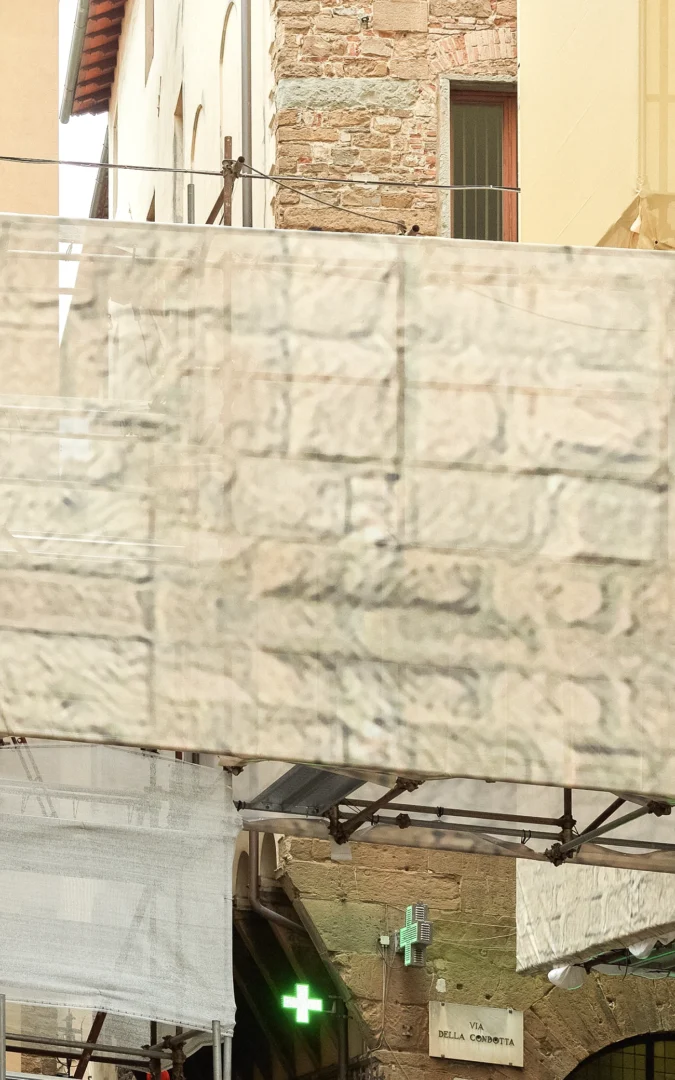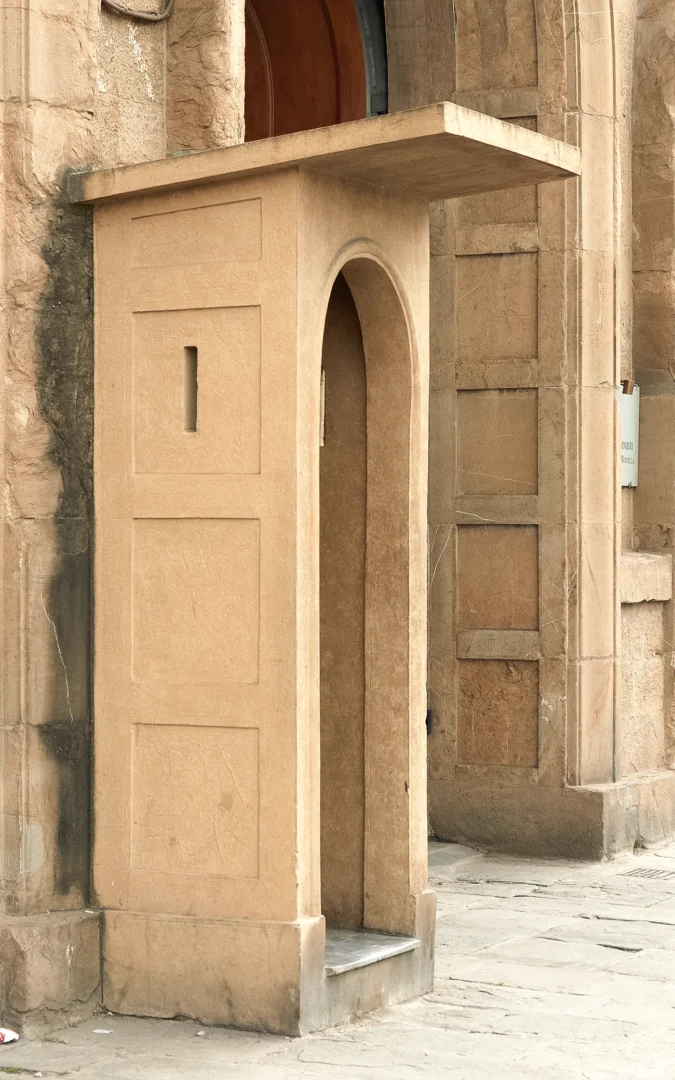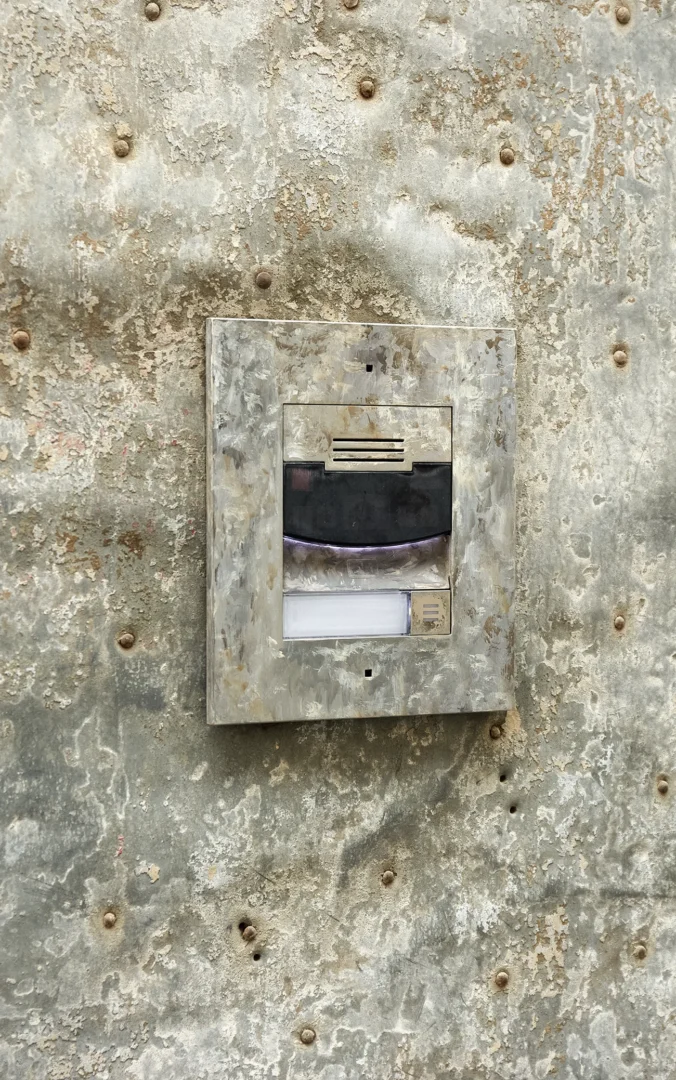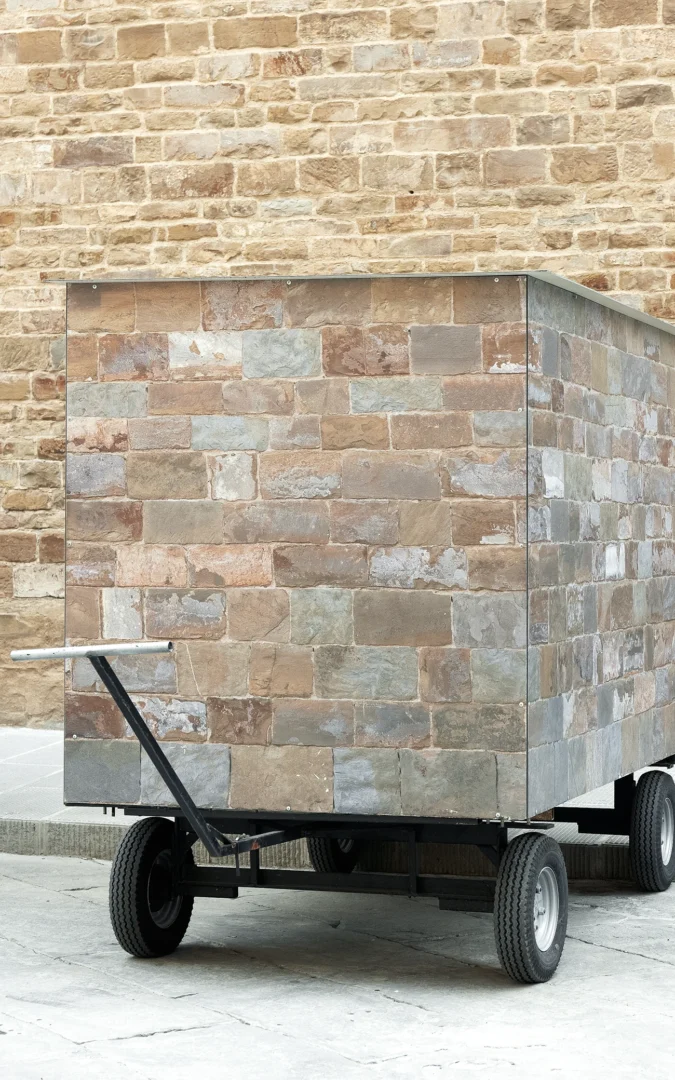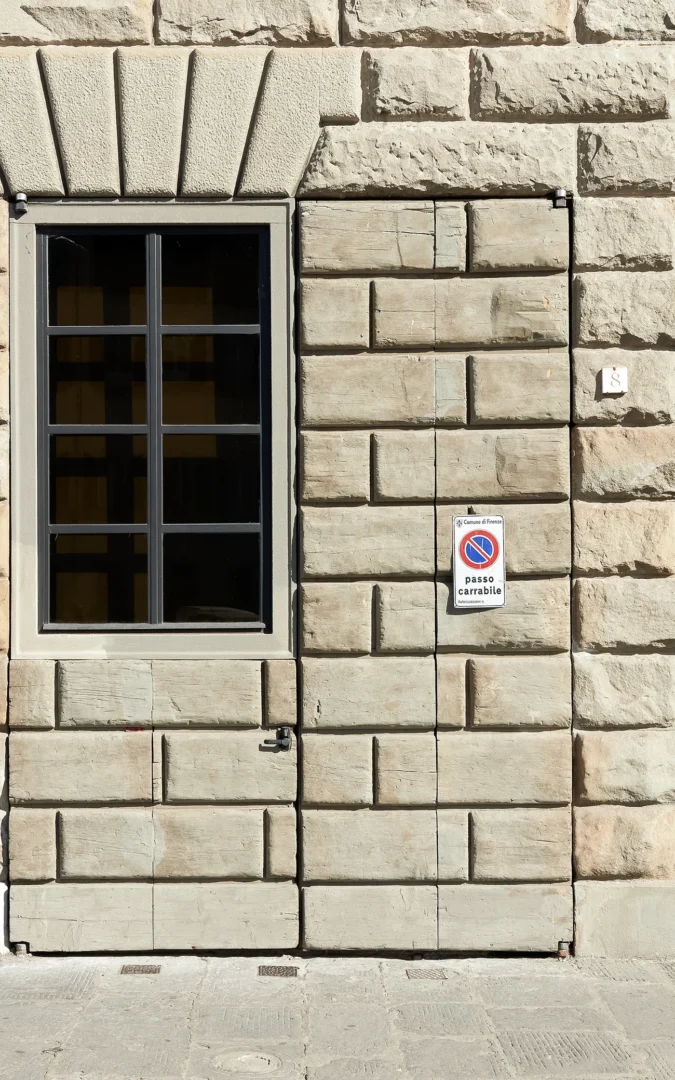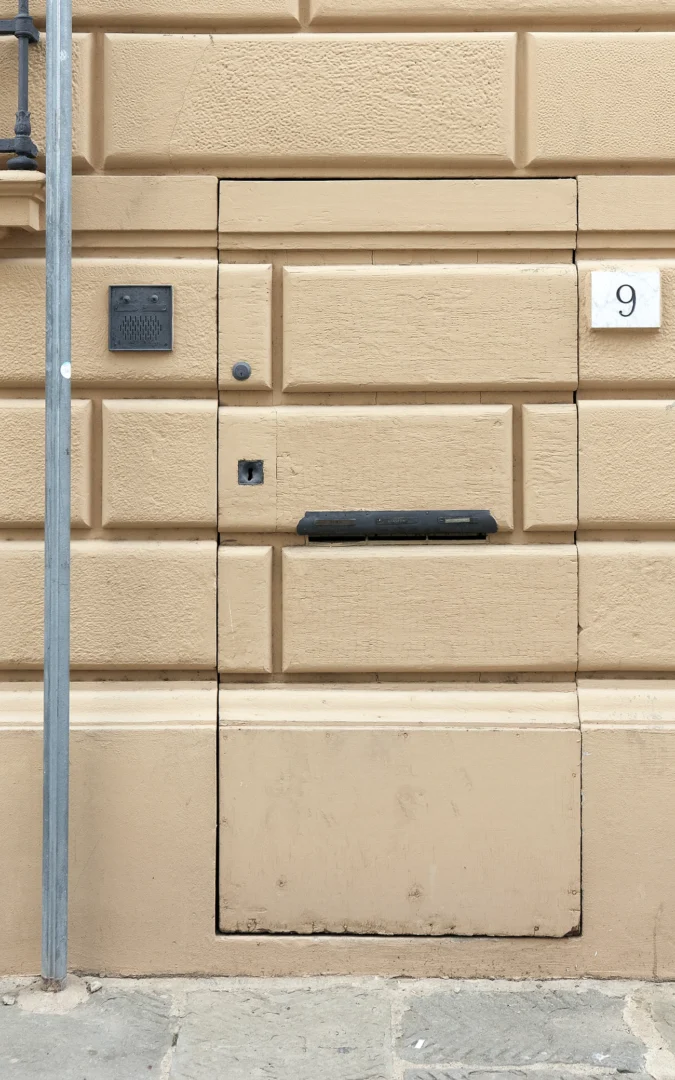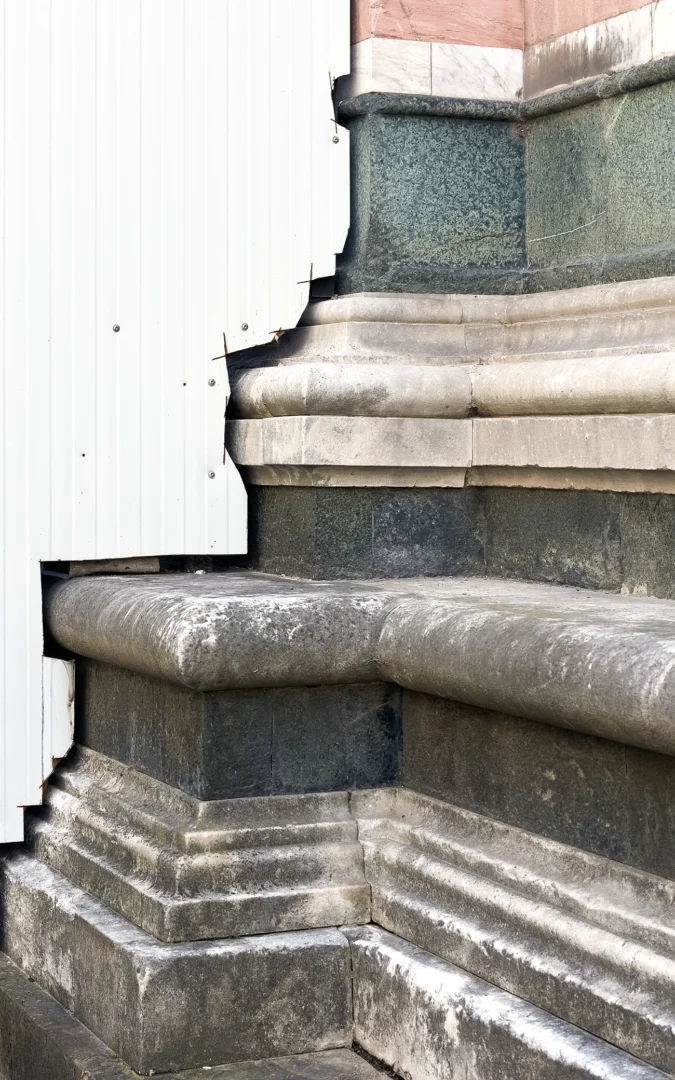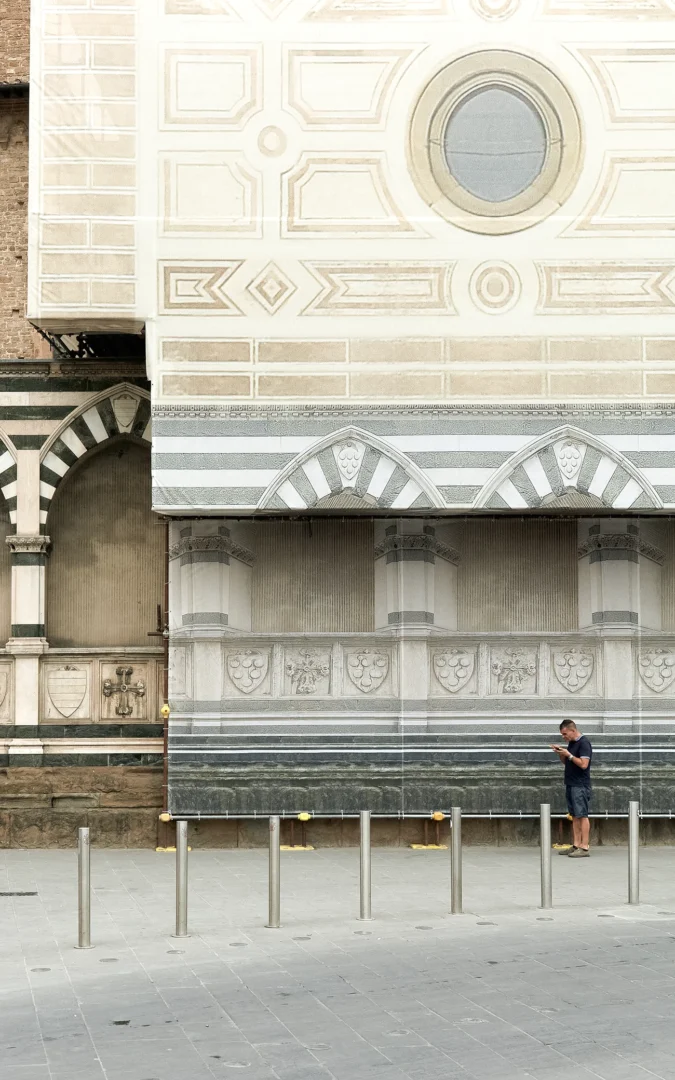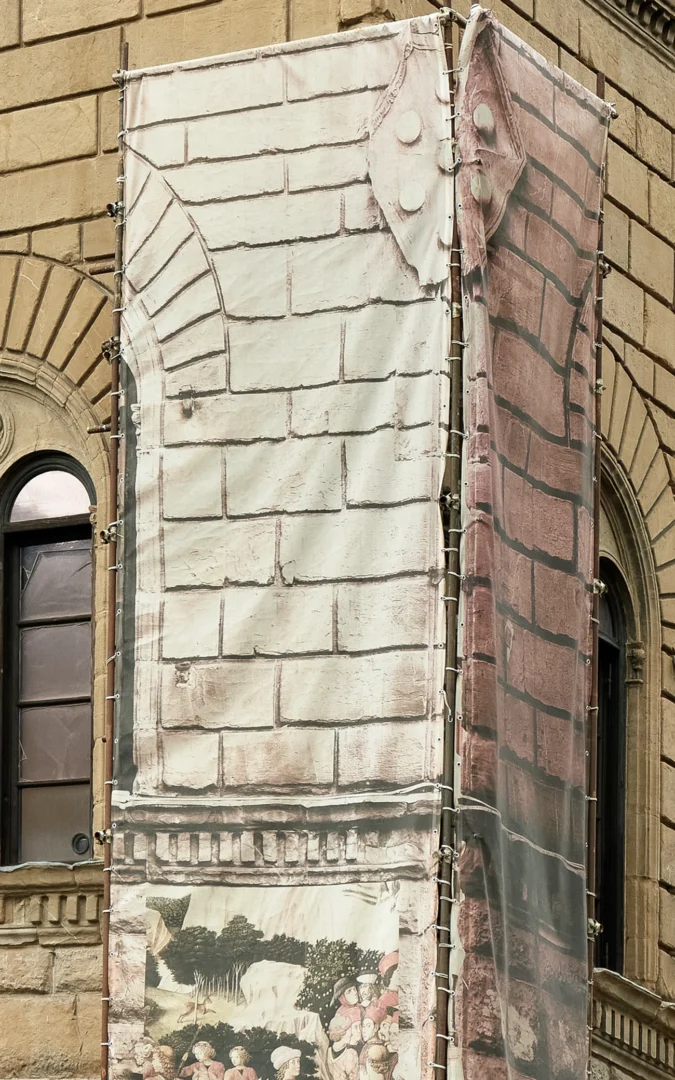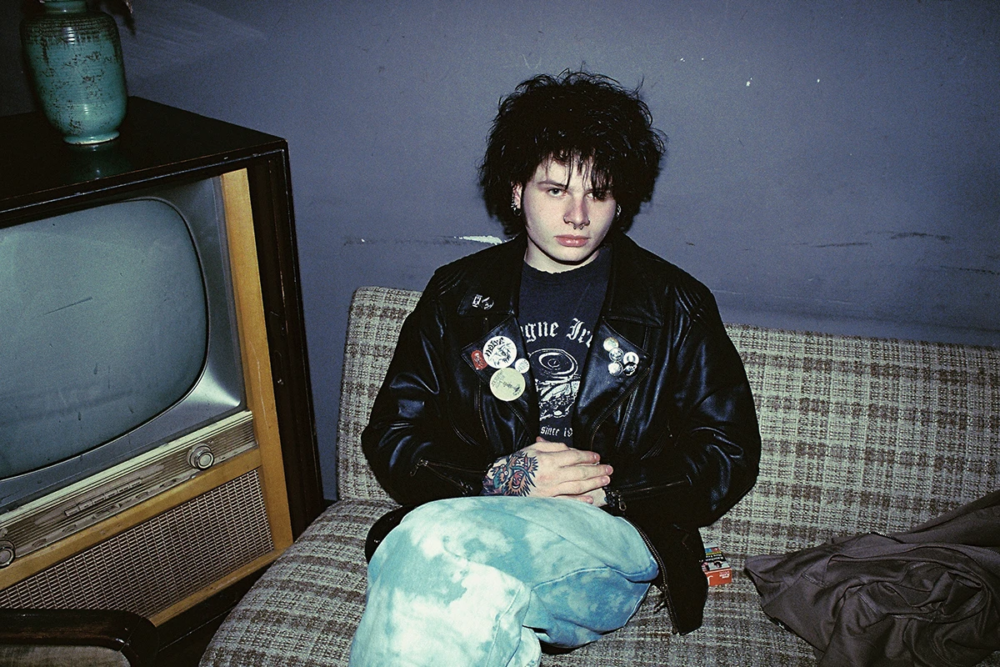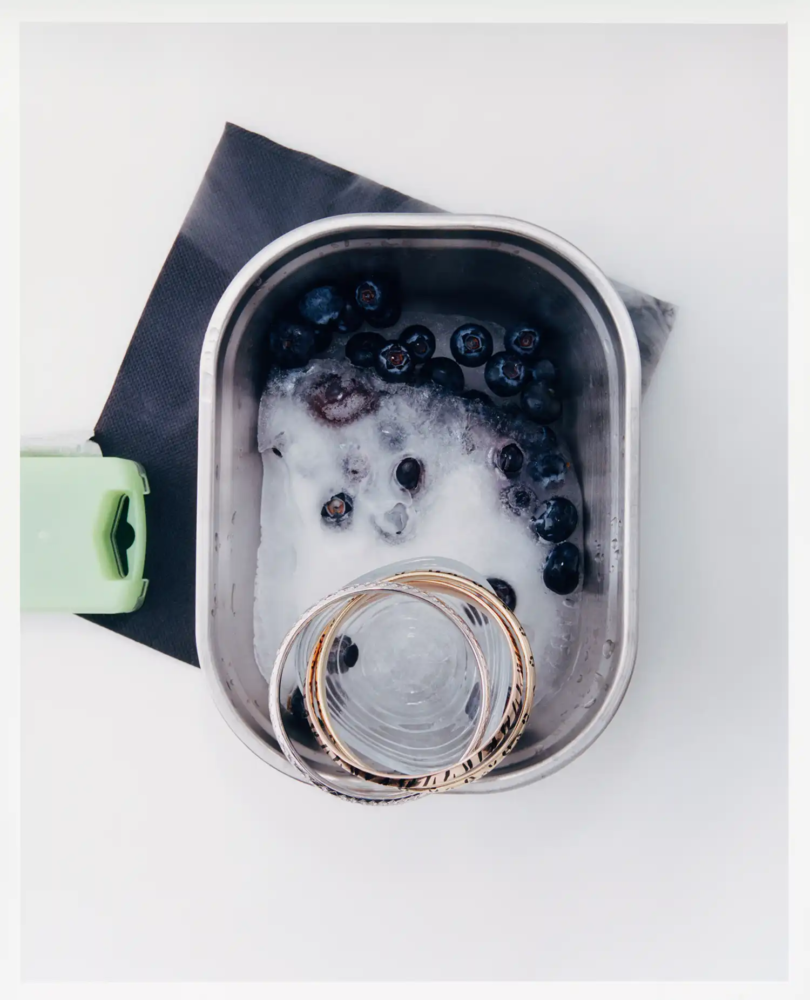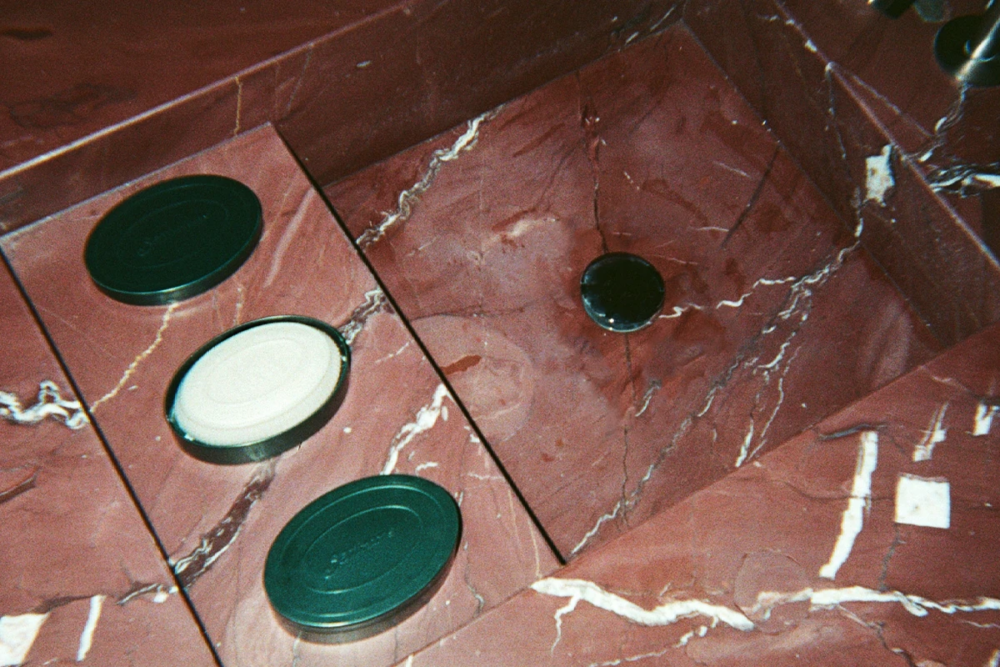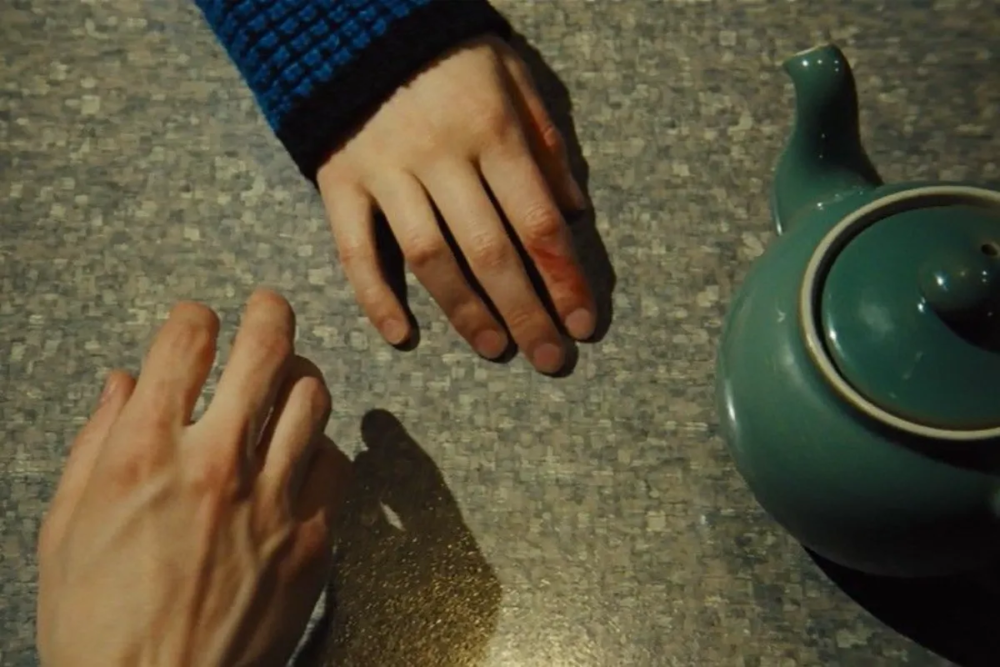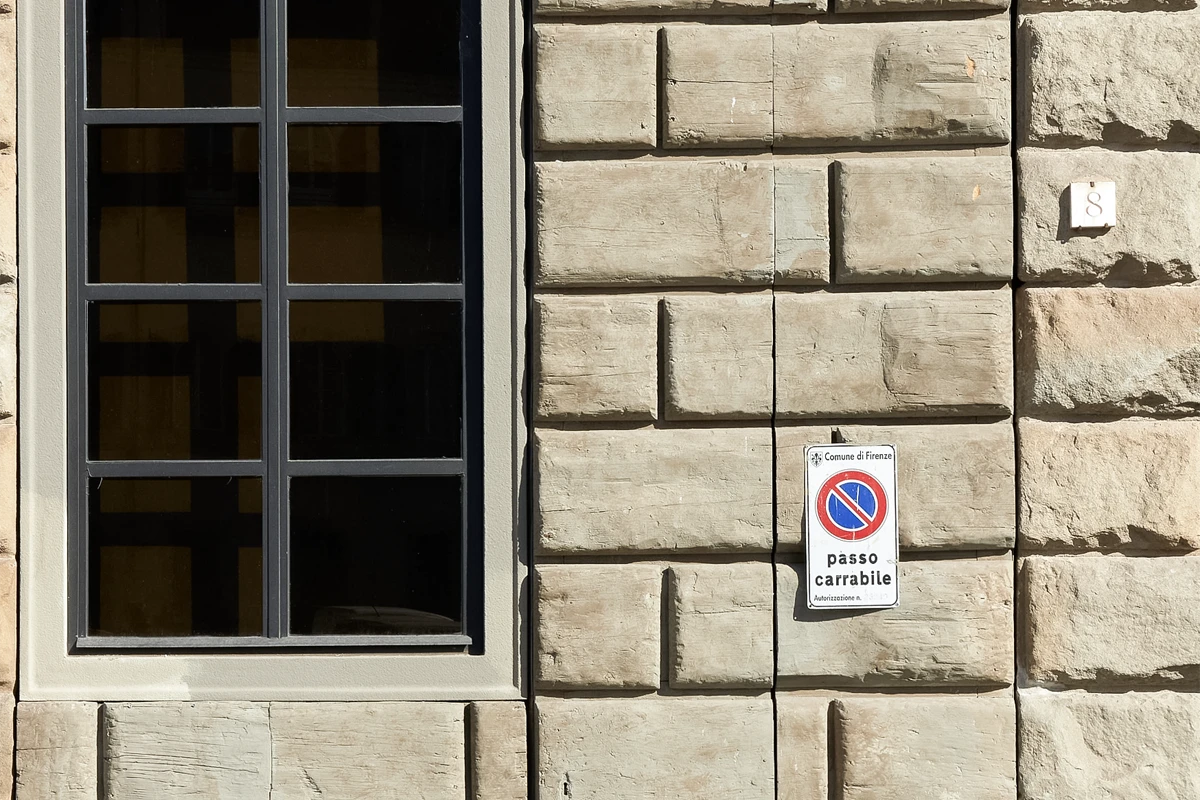
Florence: from cultural heritage to an open-air stage of fakes
Photographer Louis De Belle investigates how mass tourism, obsessive visual reproduction, and urban trompe-l’œil strategies have contributed to a distorted identity of Florence
Florence as an open-air duty-free: Louis De Belle and the illusion of authenticity
Florence ranks among the most visited cities in Italy, its Renaissance charm attracting millions of tourists each year. But with this visibility comes a paradox: the proliferation of its image has eroded the very authenticity it once represented. The city, saturated with visual reproductions—from postcards to fridge magnets, umbrellas to souvenir t-shirts—has become, as photographer Louis De Belle puts it, “a duty-free open-air shop.”
In his recent work Postcards from Florence, De Belle turns his lens on this phenomenon, documenting how the city’s overexposure has led to a strange urban mirage, where authenticity is constantly camouflaged by simulacra. The project was developed during a residency at C/O Bardi, located inside a historic Florentine palazzo, and culminated in a publication by Edizioni C/O Bardi in 2024.
Rethinking Florence beyond postcards and clichés of cultural heritage
While the title Postcards from Florence evokes the grammar of tourism, the images within are anything but conventional. There are no panoramic shots of the Duomo, no romantic vignettes of Ponte Vecchio, and no celebratory tributes to David. Instead, De Belle captures an uncanny landscape of overlooked urban details: ATM machines wedged into Renaissance architecture, faux-stone façades concealing plywood panels, and restaurant interiors disguised as piazzas, complete with fake downspouts and terraces.
“Florence, because it’s such a coveted destination, clings to the visual grandeur of its Renaissance past,” De Belle notes. “But in doing so, it ends up mirroring itself endlessly.”
What emerges is a fragmented visual narrative—a series of details that together reveal a city struggling between myth and materiality. The illusion is not just ornamental; it is structural.
Trompe-l’œil in Florence: When imitation becomes urban strategy
One of the recurring themes in De Belle’s visual investigation is the trompe-l’œil—an artistic device that means “to deceive the eye.” While historically used in frescoes to simulate architectural features or naturalistic scenes, in Florence this tradition has morphed into something more insidious: a design strategy for the everyday.
During his residency at Palazzo Bardi—whose walls are decorated with faux-stone textures and painted window recesses—De Belle encountered numerous examples of visual deceit. “One of the rooms has a fake window painted on the adjacent building,” he explains. “But what interested me more were the crafted interventions hidden in the city streets—like wooden doors carved and painted to resemble the palace’s stone.”
The photographer’s interest lies less in decorative illusion and more in how these visual strategies blur the boundaries between surface and substance. The work interrogates how visual codes are manipulated not just for aesthetic pleasure, but also for the seduction of tourists—and ultimately, for commerce.
Photography as a tool to expose urban camouflage and visual paradoxes
De Belle’s use of photography is instrumental in highlighting the brief moment when illusion reveals itself as such. A wall of bugnato (the classic Florentine rough-hewn stone) might be painted wood. A window could be just pigment on plaster. A church façade under renovation is masked by a printed canvas version of itself.
In these moments, the camera acts as both mirror and scalpel: documenting the illusion, then dissecting it. This double function aligns with De Belle’s long-standing interest in the tension between representation and reality—a theme also explored in his previous series Failed Dioramas and Besides Faith.
Lorenzo Iandelli, author of the essay that accompanies the publication, captures this tension poignantly: “One of my favorite things to do when visiting churches is to locate the speaker system. The loudspeakers are usually camouflaged with stone patterns, and the overlap between history and infrastructure rarely disappoints… Each time my expectations are subverted by an unexpected visual trick, I feel a thrill: the more perverse the combination, the more fascinating it becomes.”
This moment of subversion—when the fake is more compelling than the real—is at the heart of Postcards from Florence.
Mass tourism and the collapse of cultural authenticity in historic cities
Florence’s obsession with its own image has real consequences. The city, once a crucible of humanism and artistic revolution, now risks becoming a flattened caricature of its former self. De Belle’s photographs suggest that in the race to preserve a particular image of the past, Florence has become suspended in a symbolic stasis—unable to evolve, and increasingly detached from contemporary life.
Like many historic Italian cities, Florence faces the challenge of balancing heritage with modernity. But in the face of mass tourism and economic pressure, the balance often tips toward theatricality. The city presents itself as a fixed tableau: perfectly composed, highly marketable, and infinitely replicable.
Postcards from Florence interrogates this condition without nostalgia or sentimentality. It asks what happens when a city no longer produces culture, but only recycles its image.
The detail as critique: De Belle’s aesthetics of observation
One of the defining traits of De Belle’s visual language is his meticulous focus on detail. In Postcards from Florence, the detail becomes not only an aesthetic choice but a critical tool. A small, painted stone. A window that isn’t a window. A structural repair hidden behind a theatrical illusion. These are the moments where the photograph becomes a portal—not to the Florence we expect, but to the Florence that hides beneath the surface.
Through these frames, De Belle maps a city caught in a double bind: eager to modernize, yet tethered to a Renaissance dream; committed to preservation, yet complicit in simulation. Each photograph is a quiet indictment of the broader mechanisms of urban reproduction and the commodification of heritage.
A book-object that plays with form and meaning: Postcards from Florence
The project takes its final form in a hybrid object: a book that functions both as documentation and as metaphor. Postcards from Florence, published in 2024 by Edizioni C/O Bardi, embraces the postcard format while deconstructing its function. The cover is perforated, allowing readers to tear out twelve postcards. Inside, the graphic layout mirrors the geometry of the exterior.
But the most arresting intervention comes from designer Joris Kritis, who overlaid all the images from a scanned Florence tourist guide in transparent varnish. The result is a ghostly juxtaposition between De Belle’s unsentimental photographs and the spectral imprint of the official tourist narrative.
The book itself becomes a trompe-l’œil—simultaneously seductive and subversive, echoing the tensions of the city it portrays.
Louis De Belle and the contemporary gaze on historical cities
Based in Milan, Louis De Belle holds a BA from Politecnico di Milano and an MA from Bauhaus–Universität Weimar. After stints in Berlin and collaborations with curators and designers across Europe, he has developed a practice that oscillates between commissioned work and independent research. Each of his projects—usually culminating in a publication—centers on a specific theme, explored with conceptual rigor and formal restraint.
With Postcards from Florence, De Belle not only reflects on Florence’s visual identity but also contributes to a broader discourse on how cities are seen, remembered, and consumed. In a world saturated with images, his work urges us to look again—and to question what, exactly, we are seeing.
